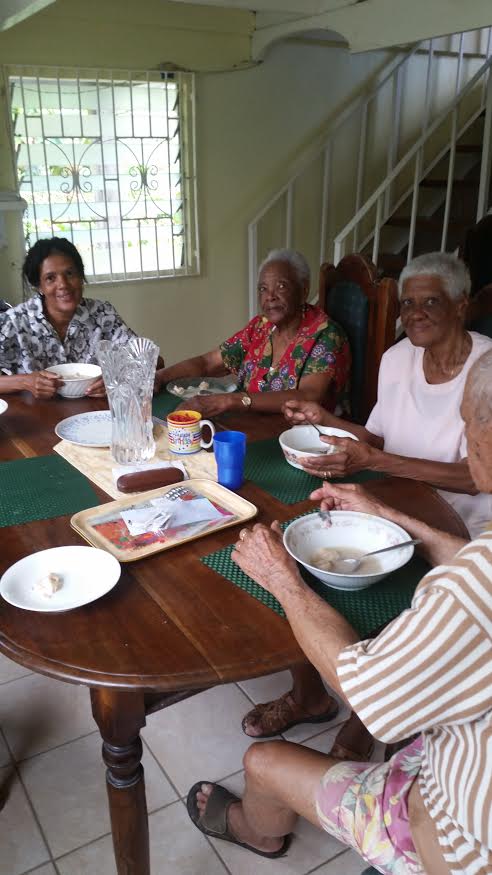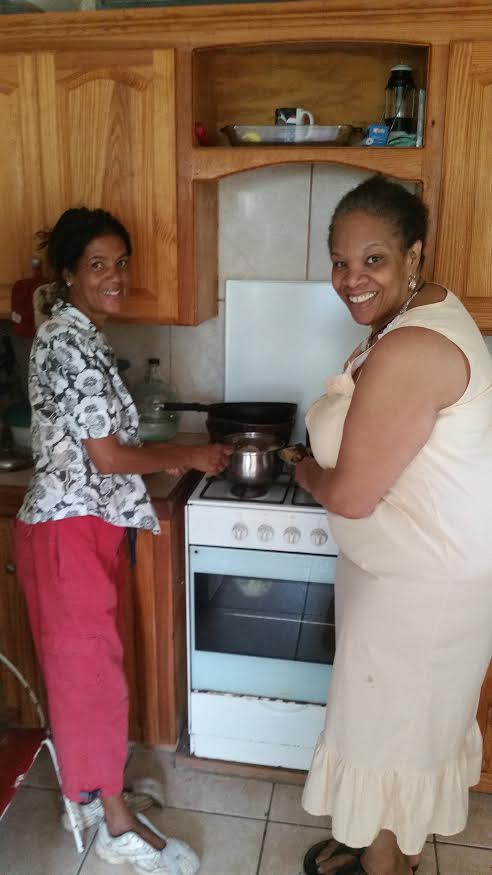I was raised on Caribbean comfort food. I was born on an island in the Caribbean called Trinidad. My parents, Veronica and Claudius Abraham, are both from the small island of Grenada, also known as the “spice island” for the numerous spices — bay, cinnamon, nutmeg, and others — that grow so profusely the air is scented with them.
My family immigrated to Toronto, Canada when I was nine years old. I lived there until I was in my late twenties, when I moved to the United States to attend Smith College School of Social Work in Northampton, Massachusetts. Shortly thereafter, I met my husband and married and moved to Exeter, New Hampshire.

As immigrants in Canada, my family found that food was the only consistent reminder of our lives in Trinidad. The weather in Toronto was a vast change from that of the Caribbean and the foods were very different. Canadian food was initially very exciting, especially to young children. I loved the new things like French fries and gravy, fried chicken, macaroni and cheese, hamburgers and hot dogs. We children always wanted the “Canadian food,” preferring it to the Caribbean food my mom cooked. I remember that my mom made homemade bread every weekend and used it to make our sandwiches for school lunch. My brother and I were so embarrassed by it because everyone else had store-bought sliced white bread. We complained constantly that we wanted Canadian food and insisted that my mom cook the new stuff.
As time passed and my brother and I matured, Sunday dinners and my mother’s cooking became very important and had deep emotional meaning. We actually began to look forward to the aromas in the kitchen of stewed chicken, curried shrimp, peppered pot roast, coconut rice and peas and callaloo and crab.
Just thinking of it now makes my mouth water. Because both of my parents worked outside of the home, weekend meals became very important. My mom cooked and baked all weekend, and there was always wonderful Caribbean food on the stove. It really became my comfort food.
Curried chicken and roti are now my favorite foods. I look forward to ordering them from my favorite Caribbean restaurants, whether at home in Toronto or when visiting the Caribbean. They remind me of Saturday evening drives with my parents and my brother when I was child in Trinidad. We would drive to the Savannah in Port of Spain and order chicken roti and coconut water. It tasted like food of the Gods. Trinidad has a very large East Indian population and curried meats and vegetables, along with really exceptional fried roti, are quite the island specialties.
As an adult I often cook Caribbean food for dinner parties. My friends always seem to enjoy it and it provides comfort for me as well. I always feel like I am expressing myself and sharing a part of my identity and history through my cooking.

I now have a family of my own in New Hampshire, and two very American children. For the longest while my kids were fairly indifferent to my Caribbean dishes and would for the most part turn their noses up when I cooked it, complaining that it smelled funny or was too spicy. Both children are now young adults and in the past year have pleasantly surprised me. One weekend last summer I prepared one of my favorite meals: curried shrimp and peppers, coconut rice and beans, fried plantains, roti and a simple chef’s salad with a vinaigrette dressing. The kids devoured it and I was shocked. When they went looking for more helpings there were none, because I generally do not cook a lot of it, expecting that my husband and I may be the only ones eating. It was such a surprise. Well, the great part of this story is that just about every weekend since then my children request that I make curried shrimp, rice and roti for them.
Roti is a type of East Indian fried bread, otherwise known as naan in Indian restaurants. I am able to purchase it in the grocery stores here very easily. This menu has become the favorite meal in our home and I make it at least

twice a month. It is amazing and a blessing for me because it allows me to express my Caribbean identity and connects my children and husband to my heritage and history. This meal has become the Thompson family meal of choice. Both children have helped to make it and have even expressed a desire to learn how to cook it. ![]()
